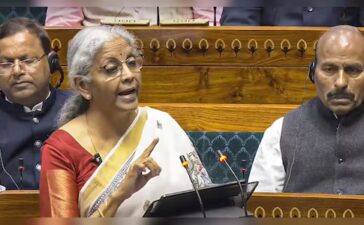Below, we highlight five of the most promising models:
1 – Grants and debt: Foundations and evolution
Grants are foundational in humanitarian finance. They offer no-strings-attached capital to meet urgent needs. But grants alone are not enough to bridge the resource gap. This is why debt financing, particularly through concessional or flexible loans, plays a critical role. By offering favorable terms, loans can be structured to incentivize private sector participation in large-scale humanitarian infrastructure projects. Take the Goma West Resilient Water Project in the Democratic Republic of Congo, for instance. Here a mix of grants and concessional loans will bring clean water access to over 500,000 people by 2026.
2 – Guarantees: De-risking projects for private investors
Guarantees and credit enhancement mechanisms, such as political risk insurance, ensure that investors are compensated in the case of non-performance. This makes investing in fragile contexts or high-risk projects—infrastructure building, say, or the provision of social services in crisis zones—significantly more attractive to private investors by protecting against potential capital losses. In Jordan for instance, the Classic Fashion project used a guarantee from GuarantCo that enabled Standard Chartered to provide a loan facility to Classic Fashion, Jordan’s largest garment manufacturer. The project has created around 1,000 jobs for refugees and local Jordanians while ensuring returns for private backers.
3 – Equity and outcomes-based financing: Incentivizing private investment
Equity investments enable private investors to purchase stakes in social enterprises or companies that address long-term humanitarian challenges. Though higher in risk, these investments can also yield high returns, both financially and socially. The rise of impact investors has broadened the pool of potential backers for humanitarian projects that focus on development and long-term stability, such as sustainable agriculture or health initiatives.
Meanwhile, outcomes-based financing brings together public-private partnerships to solve specific humanitarian challenges, with payments contingent on achieving measurable outcomes. This model has been successfully deployed in Sierra Leone, where the Education Outcomes Fund’s Sierra Leone Education Innovation Challenge (SLEIC) has impacted more than 55,000 students. The programs under SLEIC are implemented by five partners who receive upfront capital. However, if pre-agreed milestones are met, the implementation partners receive performance rewards from the outcome funder, ensuring accountability and efficient use of resources.
4 – Insurance: Protecting vulnerable populations from risks
Insurance in humanitarian finance is a relatively new yet powerful tool enabling risk pooling to protect vulnerable communities, businesses, or even entire regions from unforeseen disasters such as floods, droughts, or conflicts. Models like microinsurance provide a powerful safety net for low-income communities. Where agricultural sectors are prone to climate risks, for instance, insurance tools can help stabilize food production and livelihoods by mitigating the financial impact of adverse weather events.
In addition, insurance solutions can be bundled with other instruments like debt and equity to improve the attractiveness of investments by offering risk mitigation to private investors. The microinsurance model, with its focus on low-income individuals, is becoming a key part of humanitarian finance, making risk protection accessible to the most vulnerable.
5 – Carbon finance: Monetizing climate benefits
Carbon finance is another innovative and effective instrument, particularly in regions affected by climate change. This typically involves the creation and trading of carbon credits, which represent a ton of CO2 equivalent reduced, avoided, or sequestered. Carbon credits for things like renewable energy installations or reforestation projects can generate revenue, provide much-needed resources and jobs for local communities, and contribute to global climate goals by helping mitigate climate risk. For example, the Refugee Environmental Protection (REP) Fund, initiated by the UN High Commissioner for Refugees (UNHCR), aims to increase the availability of environmentally sustainable resources in displacement settings, providing more clean energy to power the water, schools, and health infrastructures used by refugees and host communities. In areas prone to conflict or instability, these initiatives can provide long-term resilience, supporting communities in their efforts to recover and build more sustainable futures.















